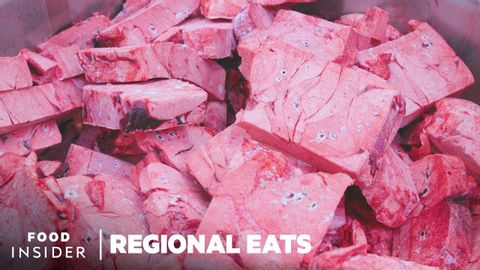
Subtitles & vocabulary
How Traditional Haggis Is Made In Scotland | Regional Eats
00
林宜悉 posted on 2020/10/24Save
Video vocabulary
stuff
US /stʌf/
・
UK /stʌf/
- Uncountable Noun
- Generic description for things, materials, objects
- Transitive Verb
- To push material inside something, with force
B1
More process
US /ˈprɑsˌɛs, ˈproˌsɛs/
・
UK /prə'ses/
- Transitive Verb
- To organize and use data in a computer
- To deal with official forms in the way required
- Noun (Countable/Uncountable)
- Dealing with official forms in the way required
- Set of changes that occur slowly and naturally
A2TOEIC
More recipe
US /ˈrɛsəˌpi/
・
UK /'resəpɪ/
- Noun
- Conditions likely to create a particular result
- Directions for making a dish, with the ingredients
B1
More Use Energy
Unlock All Vocabulary
Unlock pronunciation, explanations, and filters
